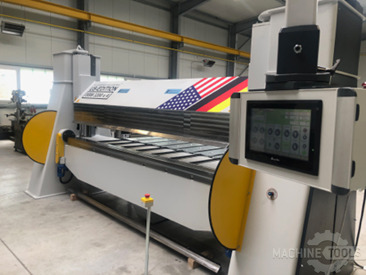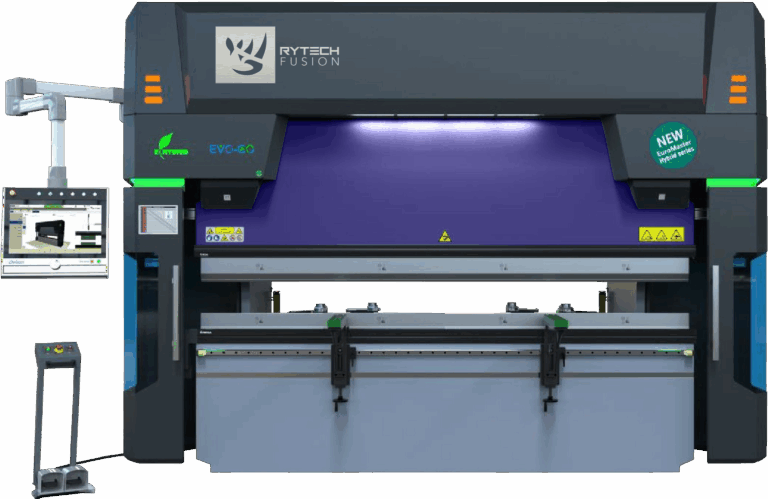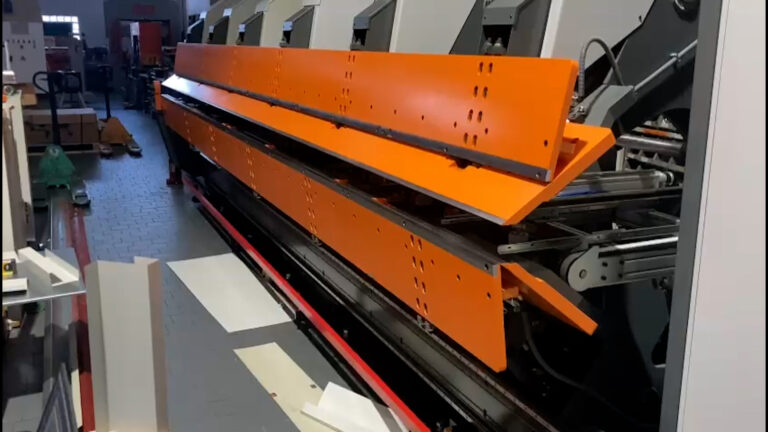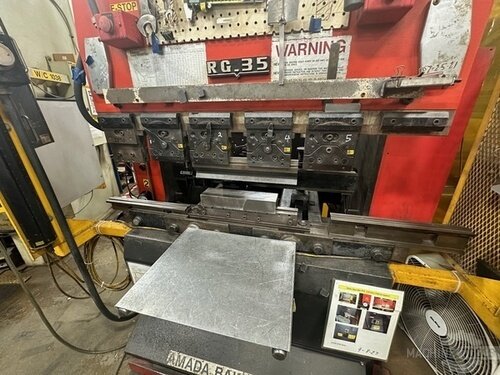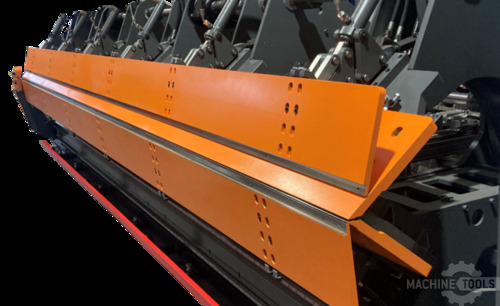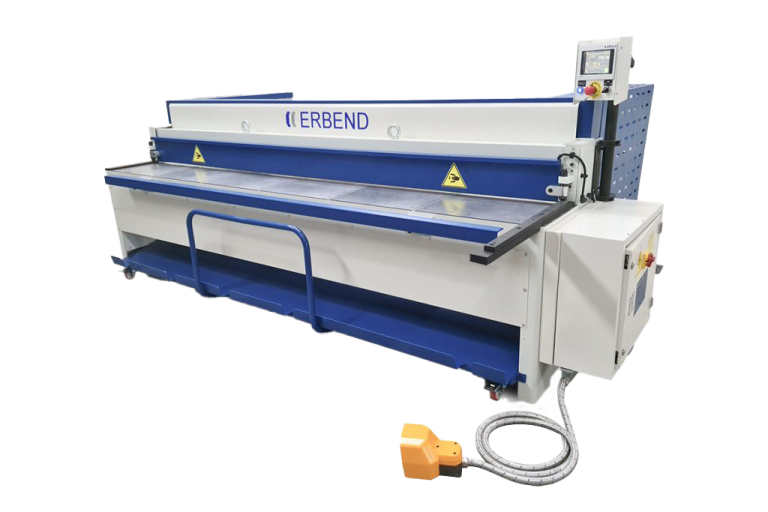Unlocking Sheet Metal Efficiency with Experience
Patrick (Pat) O’Neill
Regional Sales Executive, Mac-Tech
Growing up on the south side of Chicago, I learned early that hard work and honest advice go a long way. That’s the same approach I bring to Mac-Tech every day—helping contractors, manufacturers, and fabricators across the Midwest and beyond get the most out of their production lines. Whether you’re running a busy roofing shop or expanding a custom fabrication business, I know your equipment investments shape your bottom line. My job? To make sure you have the right tools in place to meet today’s tight deadlines and tomorrow’s growth—without compromise on safety or quality.
Understanding Modern Fabrication Needs: Slitting, Forming, and Folding Challenges
In today’s competitive landscape, shops face mounting pressure: shorter lead times, rising labor costs, and the demand for ever-tighter tolerances. From slitting coil stock to forming panels, downspouts, and custom parts, every step needs to be lean, accurate, and safe. Traditional folders and press brakes can create bottlenecks—not only in manual handling but in material repositioning and operator fatigue. That’s why evaluating the latest folding technology isn’t just about speed; it’s about reducing touchpoints, automating repeatability, and keeping your skilled workforce focused on value-added work.
The Coil-Fed Advantage: Reducing Waste and Maximizing Throughput
More shops are turning to coil-fed systems for continuous production. By integrating decoilers, slitters, and advanced folders, you can run long panels, minimize scrap, and optimize every pound of material. But the real leap comes with double folder technology—especially when paired with automatic backgauges and gripper systems. This setup not only slashes cycle times but also eliminates unnecessary handling between positive and negative bends, meaning less downtime and a safer environment for your team.
Evaluating Double Folder Technology: Key Performance Criteria
When I walk a shop floor with a customer, we look beyond just specs on paper. For example, the Stefa VHX double folder is engineered for both speed and precision. Its hybrid servo-hydraulic system delivers closed-loop control, allowing for rapid acceleration and precise velocity adjustments. Idle phases require zero hydraulic power, saving energy, while electric axes work concurrently to streamline positioning.
Key features to consider:
- Positive and Negative Bending: Enables complex geometries with fewer setups. Removable reinforced tools allow for tight, small-radius bends.
- Automatic Grippers & Backgauges: Secure sheet handling with front/rear stops for 90° bends up to 45mm high, reducing manual intervention.
- Big Beam Displacement: Greater tool clearance means you can handle tall profiles and deep boxes without secondary operations.
- Customizable Tooling: Match your regional panel profiles, from standing seam to architectural soffit, without compromise.
- Safety Systems: Three-dimensional laser and fence protection keeps operators safe, whether running fully automatic or semi-automatic modes.
Upgrading for Speed and Safety: How Advanced Machines Minimize Downtime
The move to a double folder with hybrid technology pays off in multiple ways:
- Faster Throughput: Servo-driven axes and simultaneous movements cut positioning time between bends.
- Labor Savings: Automatic grippers and extendable handling tables free up skilled operators for other tasks.
- Safer Operations: Physical fences, advanced lasers, and retractable guards protect staff without slowing production.
- Reduced Rework: Tight tolerances and consistent automation mean fewer errors and less scrap.
- Energy Efficiency: Idle hydraulic phases and electric axes reduce your power bill—especially on high-volume lines.
For example, a customer in the upper Midwest swapped three legacy folders for a VHX6 double folder. The result? Production doubled, labor costs dropped 30%, and their team reported fewer injuries and less fatigue on long panel runs.
Custom Solutions: Matching Machine Capabilities to Your Production Demands
No two fabrication shops are the same. That’s why I focus on matching equipment to your real-world requirements:
- Panel Lengths: Need 21ft or 27.5ft runs? The VHX6 and VHX8 accommodate both, up to 2mm (14ga) thickness.
- Profile Variety: Custom tooling and extendable tables adapt to everything from gutter parts to architectural panels.
- Semi-Automatic Options: Not ready for full automation? Standard backstops and pedal controls keep workflows familiar while boosting productivity.
- Integrated Lines: Pair double folders with slitters, decoilers, and roll formers for seamless, coil-to-part efficiency.
DR. HOCHSTRATE 3200*6
ABM 38
Case Studies: Real-World Efficiency Gains in Roll Forming and Folding
A regional roofing manufacturer recently upgraded from a combi-beam folder to a Stefa VHX4 double folder. They saw:
- 50% faster changeover between positive and negative bends—no flipping parts, no extra handling.
- 20% reduction in scrap due to precise closed-loop positioning.
- Improved operator safety with multi-zone laser guarding, allowing junior staff to run the line confidently.
Another customer producing commercial downspouts integrated a VHX3 into their coil-fed line. The result: one operator runs the entire forming and folding process, freeing up a full-time employee for other value-added tasks.
Conclusion: Partnering for Continuous Improvement in Sheet Metal Fabrication
Whether you’re evaluating your first panel folder or planning a full line upgrade, the choices you make today set the stage for your shop’s future. My goal at Mac-Tech is to be your trusted partner—offering honest advice, in-person walkthroughs, and solutions tailored to your business. Let’s work together to maximize your output, improve safety, and ensure you’re ready for whatever the market throws your way.
Frequently Asked Questions
When is the right time to upgrade a roll former or folder?
The best time is when you’re seeing recurring bottlenecks, rising maintenance costs, or missed deadlines due to outdated equipment. If you’re considering new product lines, automation, or higher throughput, let’s talk about options that future-proof your investment.
How do servo-driven folders compare to hydraulic systems?
Servo-driven (hybrid) folders offer faster acceleration, precise control, and lower energy usage during idle phases. They’re ideal for high-mix, high-volume shops aiming for tight tolerances and reduced labor.
What’s the difference between a combi-beam and a double folder?
A combi-beam folder switches tools for different bend types, which can slow production. A double folder executes positive and negative bends without flipping or repositioning the part—saving time and reducing handling risks.
What are signs a roll forming line is no longer cost-effective?
Increasing downtime, frequent repairs, inconsistent quality, and excessive manual labor are all red flags. If you’re losing jobs to faster competitors, it’s time to look at an upgrade.
Can I customize tooling for my regional panel profiles?
Absolutely. We work with you to ensure your double folder or roll former matches your local market needs, whether you’re doing architectural, agricultural, or commercial work.
Is automation safe for my operators?
Modern double folders use multi-level safety systems—physical fences, three-dimensional lasers, and retractable guards—keeping your team safe while maximizing productivity.
Ready to see how double folder technology can transform your shop? I’m here to help—whether you want a demo, a quote, or just some honest advice. Let’s raise your production line to the next level.
Get Weekly Mac-Tech News & Updates

